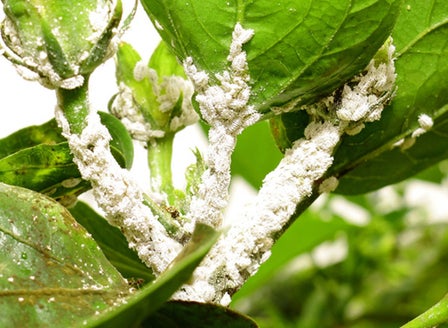Dracaena is a houseplant genus that includes many popular varieties. They can survive in a range of growing conditions, are easy to maintain, and have the added benefit of being able to remove harmful toxins from the air. Dracaena are the ideal companion for the home or office!
Planting Calendar
Dracaenas can be grown indoors all year round
Prepare
Position
Dracaena grow best in bright indirect light but can also survive in low light positions. Darker leaved varieties are better suited to lower light, though they will grow slower.
Soil
Dracaena must be planted into a free draining soil for optimum growth. Plant into Kings House Plant Mix.
Plant
Dracaenas should be planted into a free-draining soil for optimum growth and only repotted in spring. We recommend planting into a free-draining soil, such as Kings House Plant Mix. When repotting ensure that your new pot has drainage holes in the bottom. Replant into a pot that is about 10cm larger than the previous pot. Dracaena Marginata can be grown outdoors if in a free draining, sheltered sunny position.
Care
Watering
Water only when the top half of the soil has become dry, usually about once every 2-3 weeks during the hotter months. In the colder months water a little once a month. Over watering causes root rot and is the main reason a Dracaena plant dies. Never allow the plant to sit in water! Drooping or yellowing leaves are a sign of overwatering or poor drainage.
Feeding
Feed monthly with Kings House Plant Liquid Food. Feed during Spring and Summer only. They don't require any fertilising in cooler months.
Protecting
Dracaena can be attacked by mites and mealybugs, especially in very hot positions. It is best to spray for prevention, rather than trying to cure an infestation once it is there. Spray with groventive garden, or for an organic option, spray with Aquaticus Bugtrol, at the first sign of infestation.
Spraying
Dracaena can be attacked by mites and mealy bugs, especially in very hot positions. It is best to spray for prevention rather than trying to cure the infestation once it is there. Spray with Groventive Garden or for an organic option spray with Bugtrol.
Pruning
Pruning dracaena ensures produces a full, healthy plant, as once pruned, the stem will sprout multiple new shoots and branch out. The best time to prune is when the plant is actively growing in spring and summer. Cut the canes at an angle to reduce the risk of infection.
General Care
When using sprays, chemicals or fertilisers always read the label and follow the instructions. Apply sprays in the evening to avoid harming beneficial insects.
Expert Tip
Dracaena do not like water that has fluoride in it, therefore try to water with distilled water, collected rain water is even better.
Tip
Mist the leaves above and below to increase the humidity. This also creates a moist environment which mites do not like. Remove dust from the leaves by gently wiping with a damp cloth.
Frequently Asked Questions
How often should I water my Dracaena?
Water only when the top half of the soil has become dry, usually about once every 2-3 weeks during the hotter months. In the colder months water a little once a month. Over watering causes root rot and is the main reason a Dracaena plant dies. Never allow the plant to sit in water! Drooping or yellowing leaves are a sign of overwatering or poor drainage.
What type of soil is best for Dracaena?
Dracaena must be planted into a free draining soil for optimum growth. Plant into Kings House Plant Mix.
How often should I fertilise my Dracaena?
Feed monthly with Kings House Plant Liquid Food. Feed during Spring and Summer only. They don't require any fertilising in cooler months.
Are Dracaena plants safe for pets?
Dracaena is toxic to pets if ingested, causing vomiting, drooling, and loss of appetite. Keep it out of reach of pets or choose a pet-safe plant alternative.
How do I prune my Dracaena?
Pruning dracaena ensures produces a full, healthy plant, as once pruned, the stem will sprout multiple new shoots and branch out. The best time to prune is when the plant is actively growing in spring and summer. Cut the canes at an angle to reduce the risk of infection.


